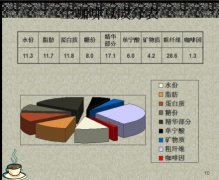Basic knowledge of Fine Coffee Coffee Culture in China
The history of the introduction of coffee into China is not long, and it was not until 1884 that coffee was first planted in Taiwan Province. In the mainland of the motherland, the earliest coffee cultivation began in Yunnan. At the beginning of the 20th century, French missionaries brought the first batch of coffee saplings to Binchuan County, Yunnan Province, and began to grow coffee in the mainland.
In terms of natural conditions, many parts of China are very close to Latin America, South America, India, Indonesia and other places, with congenital conditions for coffee cultivation, but Chinese people have been drinking tea for thousands of years. As the origin of tea in the world, people more or less ignore or despise coffee as a foreign beverage in terms of consumption habits and concepts. For a long time after coffee was introduced into China, people did not pay enough attention to the cultivation of coffee, and the development was extremely slow.
In recent years, with the impact of foreign culture and the change of life style, coffee has entered the lives of ordinary Chinese people more and more, and coffee cultivation has gradually developed in China.
Now, there are considerable coffee planting bases in Yunnan, Hainan, Guangxi, Guangdong and other provinces in China. Some world-famous coffee companies, such as Nestle, have set up branches in China. They not only sell coffee products to China, but also purchase coffee beans from coffee planting bases in China, which not only promotes coffee sales in China, but also promotes the development of coffee planting industry.
For Chinese people, for a long time, "coffee" and "instant coffee" are two interchangeable terms. Until the entry of Starbucks in the United States and teahouses in Hong Kong, people began to realize that coffee was not instant coffee, but something else. What is it? It's fashion. It is the abstract painting, jazz and aggressive coffee flavor of Starbucks; it is a half-tea and half-coffee drink in a teahouse, such as "Yuanyang". Served in exquisite white porcelain plates, it is served with dishes by the waiter. The former, because it is more exotic and fashionable, has become another noun for coffee after "instant coffee".
Important Notice :
前街咖啡 FrontStreet Coffee has moved to new addredd:
FrontStreet Coffee Address: 315,Donghua East Road,GuangZhou
Tel:020 38364473
- Prev

High-quality coffee basic knowledge coffee raw bean composition table
Do you know the ingredients of raw coffee beans? A list of ingredients that will teach you to read the ingredients of coffee. The content of water, fat and protein is still quite high.
- Next

Boutique Coffee Common sense Coffee Color Transformation in a lifetime
Coffee has undergone several color changes from seed to cup. The coffee tree has white flowers, and the coffee fruit is born dark green, which gradually changes to yellow in the process of ripening and finally becomes red. The raw coffee bean is wrapped in the coffee fruit, washed, dried and processed before it becomes a coffee seed wrapped in yellow parchment and then shelled and polished into jade.
Related
- Beginners will see the "Coffee pull flower" guide!
- What is the difference between ice blog purified milk and ordinary milk coffee?
- Why is the Philippines the largest producer of crops in Liberia?
- For coffee extraction, should the fine powder be retained?
- How does extracted espresso fill pressed powder? How much strength does it take to press the powder?
- How to make jasmine cold extract coffee? Is the jasmine + latte good?
- Will this little toy really make the coffee taste better? How does Lily Drip affect coffee extraction?
- Will the action of slapping the filter cup also affect coffee extraction?
- What's the difference between powder-to-water ratio and powder-to-liquid ratio?
- What is the Ethiopian local species? What does it have to do with Heirloom native species?

